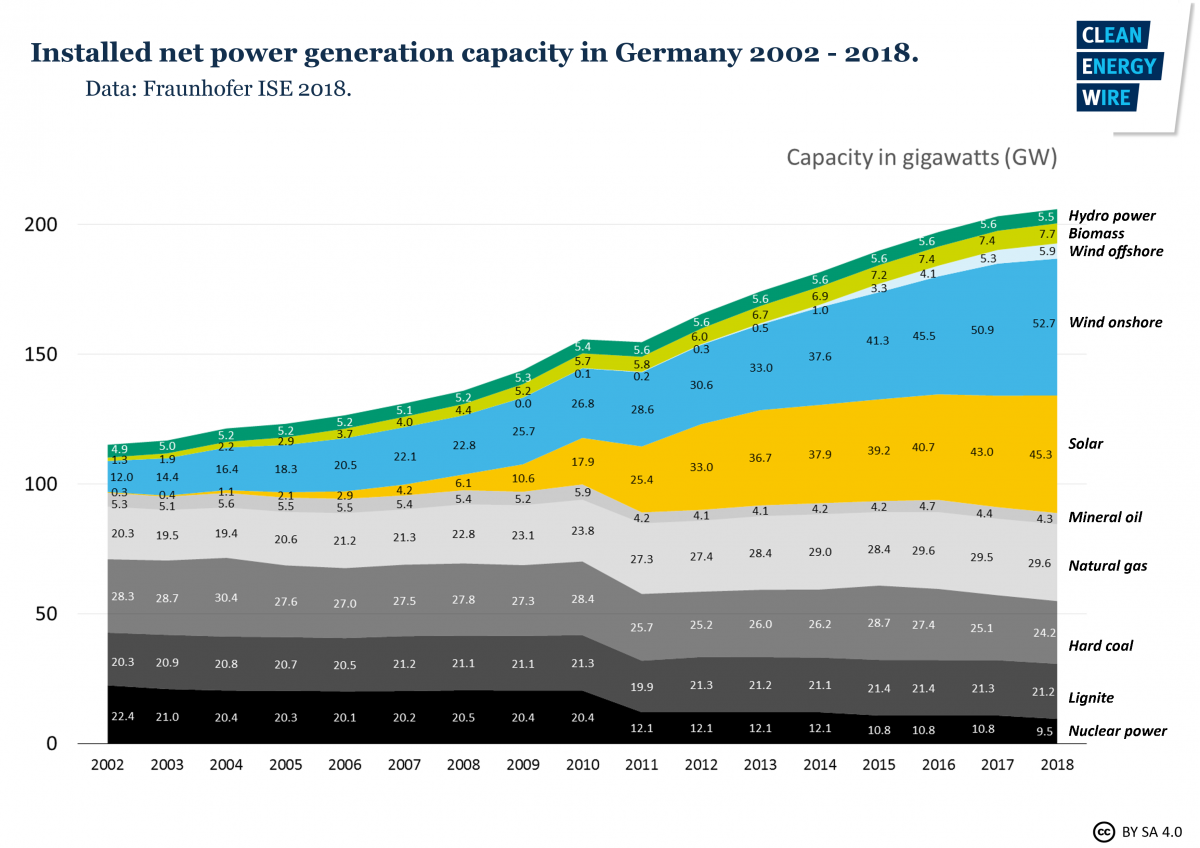Germany's renewables investments falls on lower prices, slower capacity growth
Investments in renewable energy were halved in Germany in 2018 compared to the year before, landing the country in fourth place in global renewable investments, said Ulf Moslener, sustainable finance researcher at the Frankfurt School of Finance and Management. The report, compiled by Bloomberg New Energy Finance, the UN Environment Programme and the Frankfurt School of Finance and Management, found that Germany leads in Europe if investments over the past ten years are taken into account, but that especially a drop in wind power investments brought total financial flows in renewable technology down significantly. However, since prices for renewable power installations, especially for solar power, have also fallen sharply over the past decade, Germany's capacity growth has not fallen as much as monetary investments and remained positive also in 2018.
Investments in renewable energy sources in 2018 were three times higher than in coal and gas plants, but still would not match the level needed for getting on track towards achieving the Paris Climate Agreement goals, said Jochen Flasbarth, state secretary in the German environment ministry (BMU). Flasbarth said investment levels served as an early indicator of where the energy generation mix is headed "before CO2 emissions materialise." He said Germany's Renewable Energy Act (EEG) had given renewables "a big push into the market" over the past two decades and allowed a steep learning curve for manufacturers that reduced costs. "When these lower costs were turned into lower prices by producers in other countries, this, of course, was bad news for our industry. But overall, we certainly welcome the trend of falling prices," Flasbarth said.
Globally, the capacity of renewable energy installations has quadrupled over the past ten years and investments in wind turbines, solar farms and other technology have passed the threshold of 2.5 trillion dollars. The global renewable power capacity now stands at some 1,650 gigawatts (GW), excluding large hydro power projects. Investments in 2018 stood at nearly 273 billion dollars, with China leading the charge. While the four leading countries have reduced investments, more and more countries ramp up their spending on clean energy, the report found. Renewables now account for more than two-thirds of the annually added power production capacity, said Ulf Moslener, sustainable finance researcher at the Frankfurt School of Finance and Management. "Ten years ago, hardly anyone could have imagined that solar PV will play such an important role," Moslener said. Since 2009, costs for the technology have dropped by more than 80 percent. "This should make clear what can happen over the course of one decade," he said.


